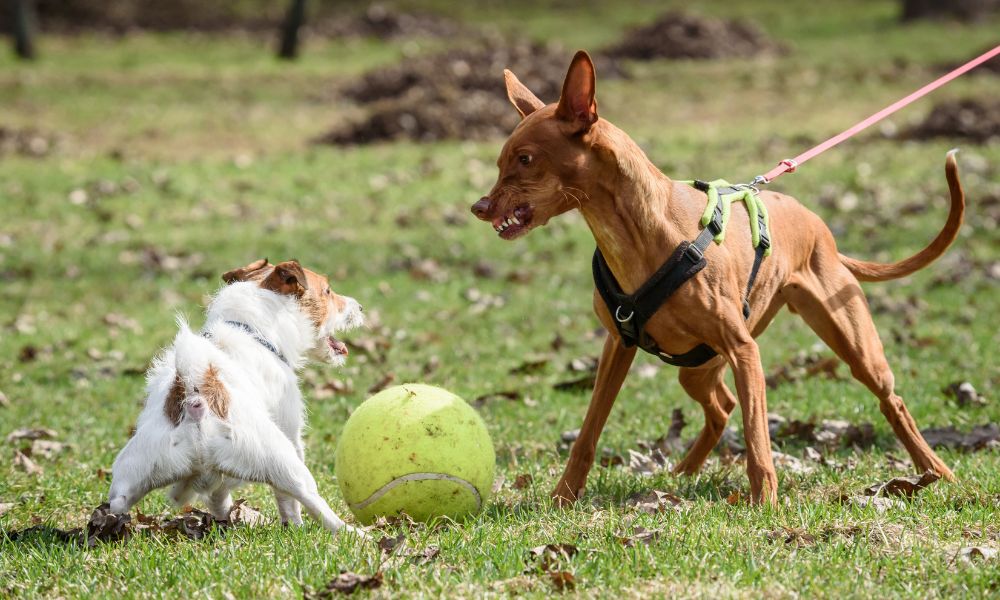A major task when getting a dog is understanding the breed’s typical temperament, as this directly impacts whether the canine is the right fit for your household. Generally, dogs become aggressive out of a place of fear and act out to protect themselves from the threat. Below, we’ll explore the common myths surrounding aggressive dogs to improve your canine knowledge.
Myth 1: Some Breeds Are Naturally Aggressive
Many people believe that specific breeds, such as pit bulls, Dobermans, German shepherds, are more prone to aggressive behaviors than other dogs, such as golden retrievers. This common belief is incorrect, as even the sweetest dog can become aggressive in certain situations. Often, the canines with a negative reputation are breeds that are harder for beginner owners to train because of the breed’s assertive nature, prey drive, or high intelligence.
Any dog, regardless of breed or size, can exhibit aggressive behaviors; it’s not just a big dog problem. No matter how small or large your dog is, you should never allow hostile behavior from your canine, as it can increase the risk of biting.
Myth 2: All Aggressive Dogs Are the Same
Another common myth surrounding aggressive dogs is that all canines display this behavior for the same reasons. While some dogs are food-aggressive, others may protect anything they deem their territory.
Moreover, the reason for a dog’s aggression can vary from fear to frustration to defending their territory. At its root, most aggression comes from a place of anxiety. Some dogs learn to cope with their fear by growling, baring their teeth, or biting. Working with a professional dog trainer teaches you why your dog is aggressive and how to discourage the behavior.
Myth 3: You Should Punish Aggressive Dogs
Dogs don’t think the way we do, no matter how much some owners wish they did. Shouting at or otherwise punishing a dog for acting hostile only increases the risk of them repeating the behavior. Doing this can be especially harmful if your dog is aggressive because of fear, as your yelling can increase their anxiety and fuel the cycle of hostility. It’s better to use positive reinforcement, such as giving your dog verbal praise or treats when they display appropriate behaviors.
Myth 4: Aggressive Dogs Are Bad Dogs
It’s easy to assume that dogs are aggressive because they’re “bad” or inherently mean, but this is an oversimplification of a behavior. Canines usually act aggressively because someone is ignoring their boundaries, which makes the dog more uncomfortable.
Before snapping, agitated dogs often become very rigid, bark, or growl at you to show their frustration. A dog may lash out and bite if you continue ignoring their boundaries after this warning.
Balanced K-9 Academy offers services for fear and aggression rehabilitation, such as leash aggression training to help modify a dog’s behavior. These professionals understand dog body language and know techniques to help prevent inappropriate behaviors in canines. Take an individualized approach to your dog’s training to address and correct their hostility.


